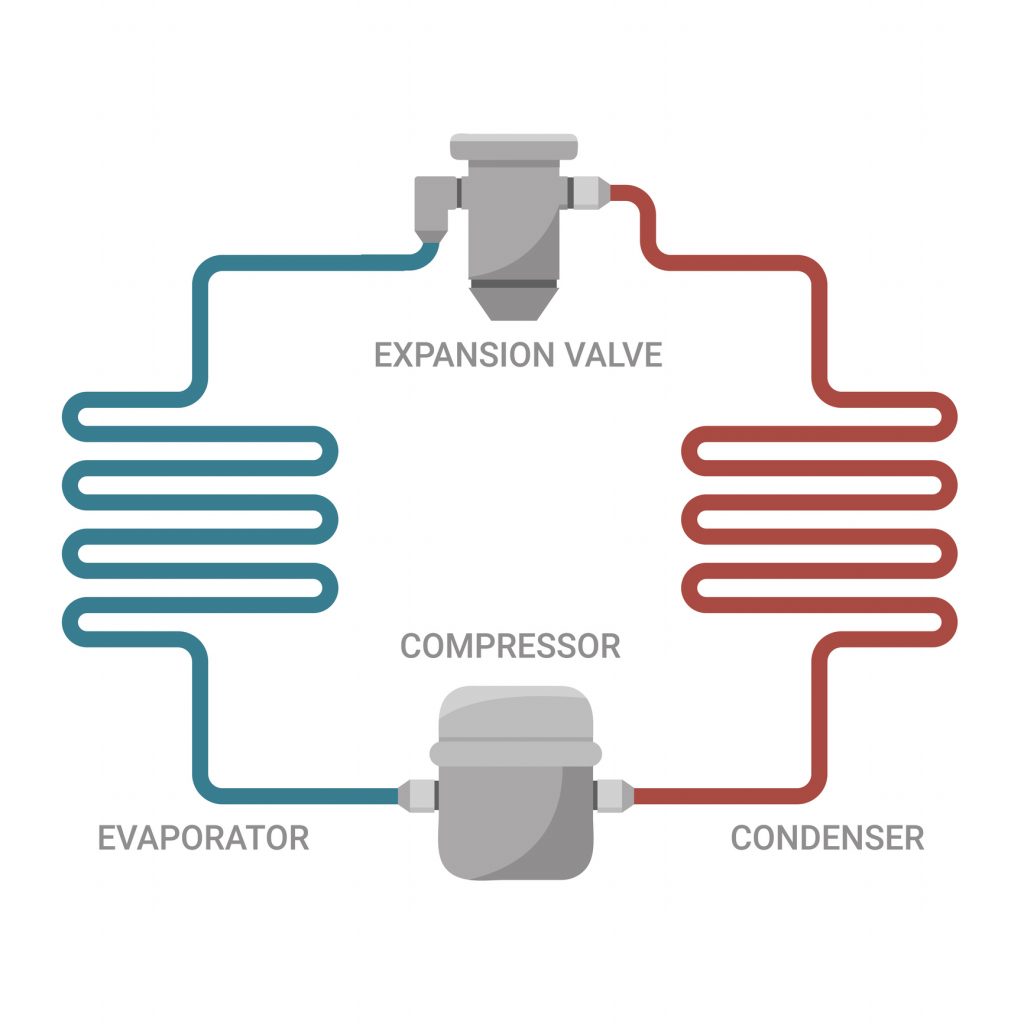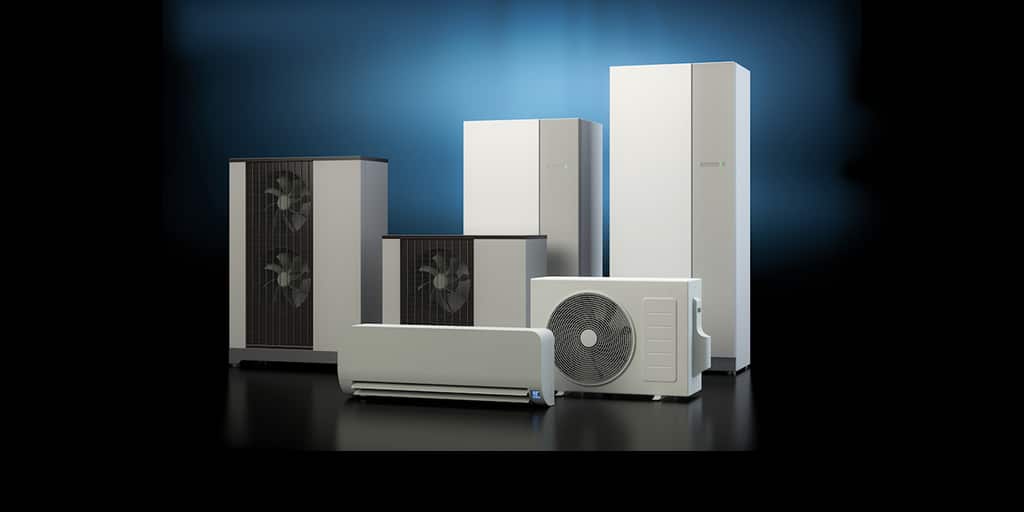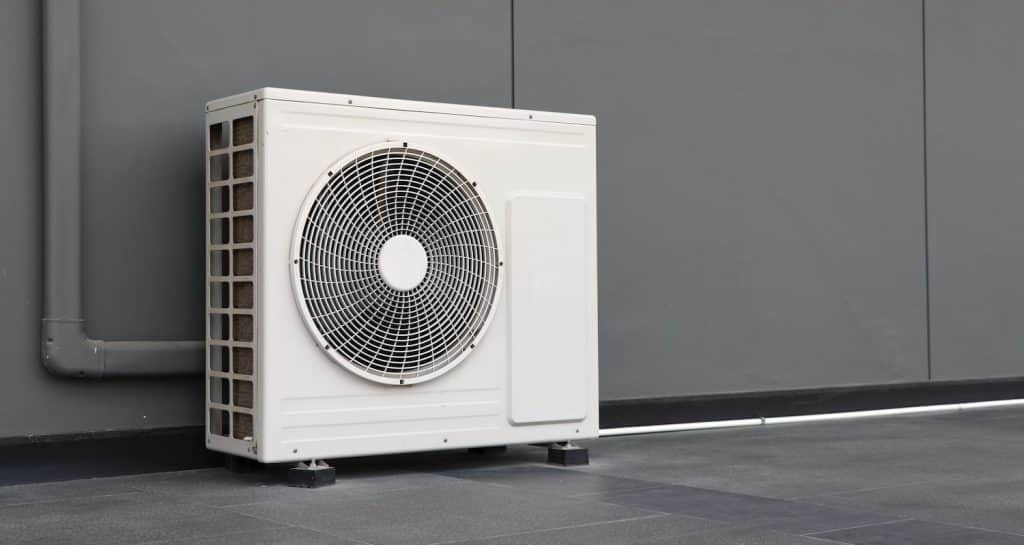Posted by Charley Cormany, EFCA Executive Director
Recent events have proven that relying on foreign suppliers for oil and gas is dangerous. Russian oil and gas profits are fueling the war in Ukraine. Much of Europe is being held hostage to its dependence on Russian oil and natural gas. The war has also pushed up global energy prices, contributing to inflation.
On June 6th, 2022, President Biden announced he was invoking the Defense Production Act (DPA) to accelerate the manufacturing of five key clean energy technologies to lower energy costs for consumers, strengthen national security, and move toward energy independence.
One of these key technologies was heat pumps. Heat pumps can drastically reduce thermal loads (heating and cooling) and have other benefits. Because buildings consume more than 40 percent of the energy in the U.S., any technology that can reduce these thermal loads is considered an essential solution.
Today, most heat pumps are manufactured outside of the United States. If we depend on others to produce heat pumps, we will continue to be vulnerable to supply chain issues and the political will of outside interests. President Biden and his advisors want to change this by increasing the domestic production of heat pumps in the name of national security.
States are also taking bold steps. In California, utilities offer generous incentives for homeowners to install heat pumps. In addition, recent legislation (SB 1477) created a statewide rebate program to promote the adoption of heat pump space and water heaters. The TECH, Clean California program has been so successful that it has burned through most of its rebate budget in less than a year.
What is a heat pump?
A heat pump is a mechanical device that moves heat from one area to another. Heat pumps rely on refrigerants to absorb and transfer heat to another location. Compressing the refrigerants generates heat, releasing the compressed refrigerant gases cools. The process of compressing and expanding the refrigerants is called the refrigeration cycle.
The Refrigeration Cycle

An air conditioner is technically a heat pump. In a residential air conditioner, the blue side is an evaporator coil in the house. Air is blown across the evaporator coil to cool the air. The red side is the heated refrigerant, which moves to the condenser outside the home, where it discharges into the air. When this process repeats, it transfers the heat to the outside, which provides cooling. Unlike air conditioners, which can only cool, heat pumps can also reverse the direction of the refrigerant flow to provide heat.
Now that we have a basic understanding of the technology let’s look at five reasons why heat pumps are getting so much attention these days.
#1 – Heat Pumps Run on Electricity
Heat pumps use electricity to power the compressor, which starts the refrigeration cycle. This means that they can run on clean, zero-carbon energy.
Do you have solar panels on your house? If so, you should take advantage of the clean energy from your solar system and use it to heat and cool your home and make hot water. Imagine cooling your house or building in the summer, or heating it in winter, at minimal cost, using the sun’s energy. This isn’t science fiction; it happens around the globe every day.
Even if you don’t have solar panels, using electric appliances like heat pumps still makes sense. In many parts of the country, the electrical distribution grid is getting cleaner every day as utilities add more and more low-cost renewable generation such as solar and wind. As we transition from fossil fuels, homes and buildings will become all-electric. Heat pumps are the ideal solution for heating and cooling all-electric buildings.
#2 – Heat Pumps Are More Efficient
Natural gas appliances have gotten very efficient over the years, but they will never match heat pumps. Today’s top gas appliances can be up to 98 percent efficient, which is impressive. Physics dictates that combustion (burning something) always produces byproducts and can therefore never reach or exceed 100 percent efficiency. This means that gas appliances have effectively reached their limit.
On the other hand, today’s heat pumps are more efficient than ever, with base-level models achieving 200 percent efficiency and some of the best models achieving nearly 500 percent efficiency. If you have a heat pump and want to confirm its efficiency, look for the COP rating (Coefficient of Performance). A COP of 1 is equal to 100 percent efficient. A COP of 3.5 is 350 percent efficient. When selecting a heat pump for your application, COP is an important consideration.
How can anything be over 100 percent efficient? The simple answer is that the electricity used to power the compressor is less than the energy the heat pump moves from one area to another.
Another advantage to heat pumps is that they come in a wider range of sizes than their gas counterparts. Gas furnaces are often too big for mild climates, such as the Mediterranean climate in California. An oversized furnace fires up to make heat, reaches its set point, and turns off. The on-and-off cycling of oversized heating equipment is a real problem and creates comfort issues and high operational costs. Smaller heat pump units correctly sized to heating and cooling loads improve comfort and reduce operating costs.
#3 – Heat Pumps Are a Proven Technology
The technology behind heat pumps is everywhere. As I alluded to previously, an air conditioner is a heat pump. Your refrigerator is a heat pump. Heat pumps keep your food cold at the grocery store. Ice machines use heat pumps. The air conditioner in your car is a heat pump. Spacecraft have relied on heat pumps for decades. The list goes on.
Heat pumps are a time-tested and well-understood technology. That’s not to say they don’t present some challenges. Heat pumps are less forgiving, so equipment sizing must be correct. Duct systems must be sized correctly and appropriately sealed. Put in an under or oversized heat pump and use an old leaky duct system, and you will have issues.
Contractors often push gas appliances because they are familiar, have lower upfront costs, and are easier for the contractor to install. This means that the customer is sacrificing long-term comfort, efficiency, and sustainability for the contractor’s benefit. If you are shopping for a heating and cooling system or a water heater and the contractor is trying to talk you out of a heat pump, I would consider it a red flag and move on to another contractor. If you are a contractor doing high-quality work, installing heat pumps is easy.
Don’t believe a contractor who tells you heat pumps don’t work well in cold climates. Heat pumps have been used in Alaska for over thirty years. Heat pumps indeed lose efficiency as the temperatures drop. Old school units relied on electric heat strips to address this problem when it got very cold. Newer “cold climate” heat pumps work well down to temps as low as -5 degrees Fahrenheit, even without heat strips. Even “standard” inverter-based heat pumps without heat strips are very effective in most climates.
#4 – Improved Comfort
A properly sized and installed heat pump system will provide better comfort than a gas appliance. It might seem counter-intuitive, but the best overall comfort is delivered when the heat source temperature is close to the desired set point. If you want the inside temperature to be 70 degrees, it would be ideal to deliver heat at 80 or 85 degrees over a long period. The challenge is that 85 degrees is cold to the touch for humans, as our body temperature is 96 degrees. This means air at the ideal heating temperature might actually feel cool if it blows directly on someone. Good heat pump design keeps the conditioned air off the occupants. Educating the client and setting an expectation for how the system operates must be a part of the installation.
A basic heat pump has two modes, on or off, just like a gas furnace. Single-speed heat pumps can have some of the same issues as gas furnaces. The constant cycling on and off can impact comfort as they are constantly chasing the desired set point (temperature on the thermostat). Manufacturers have addressed this issue with two-stage systems. Think of a two-stage heat pump like a car with a two-speed transmission. Two-stage systems are an improvement, but there is a better option.
Modern heat pumps can vary their output based on actual loads. This technology is called VRF (Variable Refrigerant Flow) in the commercial world and Variable Capacity or Inverter Driven in the residential market. Variable-capacity equipment provides much better comfort, lower operational costs, and tends to be much quieter. The downside is that the upfront costs of variable capacity equipment are more than two-stage or single-stage equipment.
In most cases, the long-term operational costs of matching the output to actual loads offset the initial upfront investment of variable capacity equipment. You should factor in the long-term operating cost when replacing any mechanical system. In my opinion, variable capacity is the correct solution for 99 percent of applications.
#5 – No On-site Emissions
All buildings with combustion appliances (natural gas, propane, or fuel oil) have one thing in common: emissions. Most of us don’t think about buildings having tailpipes like cars, but they do. They happen to be on the roof and pointing straight up.
These emissions account for about 28 percent of the total greenhouse gas (GHG) emissions of the United States. The simple fact is we cannot afford to keep burning fossil fuels for thermal loads in buildings. The good news is heat pumps are a reliable and proven technology that can replace combustion appliances and provide the same or improved service.
It’s Time to Champion Heat Pumps
Water heater and heating and cooling systems have an expected useful life of 12 to 15 years. We must embrace heat pump technology today and stop installing GHG spewing appliances in our buildings. We have the technology and the means to do this. We must educate the public on why it makes sense and encourage contractors to embrace the technology.
To fight climate change and reduce our dependence on foreign energy, we need heat pumps, and we need them now. We are better off if we can manufacture them in the United States. The Biden administration is taking some aggressive steps in this direction. Invoking the DPA to increase the availability of U.S.-made heat pumps sends a clear and bold signal that we should all pay attention to – our future depends on it.






